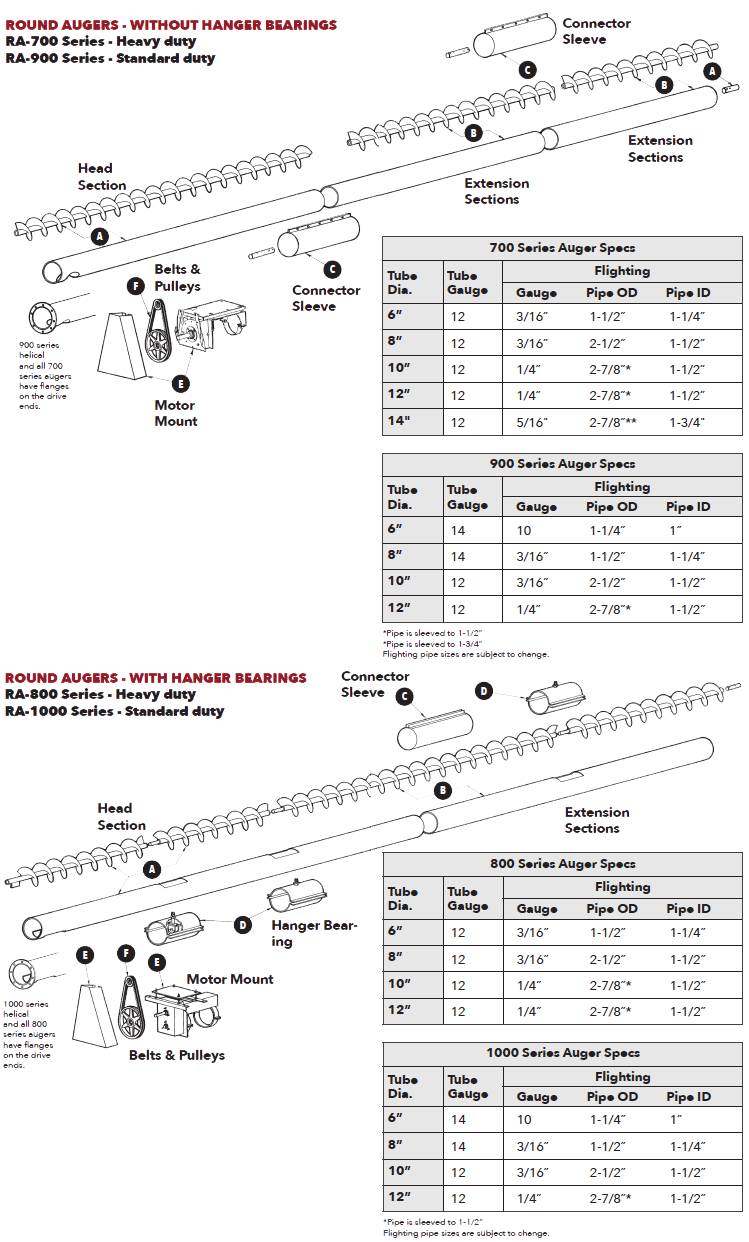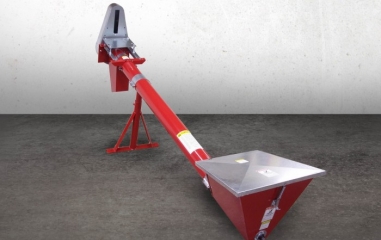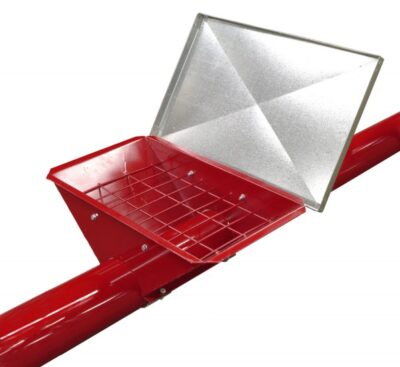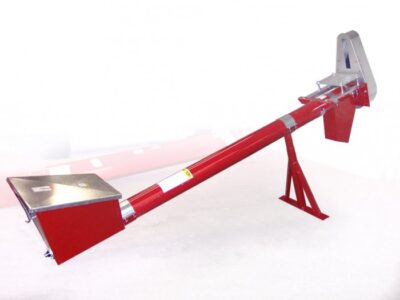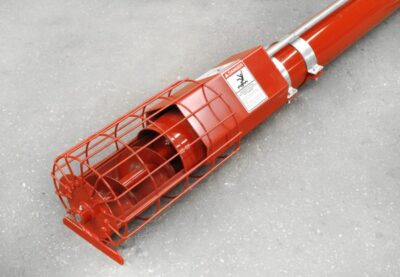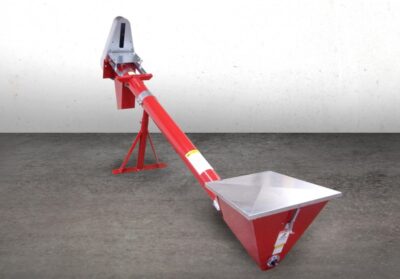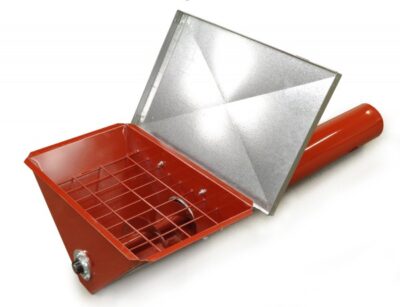- Specifications
- Photos
Round Tube Augers
GENERAL
Round tube augers are a great choice in grain handling systems with continuous flow dryers, livestock feeding systems, and overbin installations.
Augers are available in 6”, 8”, 10”, 12” and 14” diameters and can convey any free flowing material where particle size is less than 1/3 of the auger diameter. Sudenga offers a large array of components and accessories for conveyor installations. Lots of drives, motor mounts, intakes, hoppers, and mounting brackets allow plenty of flexibility in designing your system. Many styles of spouting, discharges, direc-tional flow valves, and adaptors make it easy to set up a delivery system that really works for you.
Augers must have all guarded intakes in place during operation.
STANDARD FEATURES
- Standard or heavy duty
- With or without hanger bearings
- 6″, 8″, 10″, 12″ & 14″ diameters
- Direct, chain reduction, and helical gear drive
- Motor mounts for all applications
- Intakes, discharges, valves, adaptors, mount-ing brackets, etc
AVAILABLE IN FOUR STYLES
| Heavy-duty | Standard-duty | ||
|---|---|---|---|
| RA-700 Series | RA-800 Series | RA-900 Series | RA-1000 Series |
| No hanger bearings | With hanger bearing | No hanger bearings | With hanger bearing |
| Recommended for applications from horizontal to 90° | Recommended for applications from horizontal to 40° | Recommended for applications from horizontal to 90° | Recommended for applications from horizontal to 40° |
| Double bearing direct or helical gear drive | Direct, roller chain or helical gear drive | ||
| Bolted flange at the end of drive | |||
NOTE: Direct drive, chain reduction, and helical gear drives are available. Hanger bearings are two-piece wood block or one-piece bronze styles. Reduction drive is recommended for horizontal augers with intermediate discharges. Direct drive may produce conveying speeds that allow material to be carried across the intermediate discharges. For higher capacities, choose a larger auger, rather than increased RPM.
Capacities
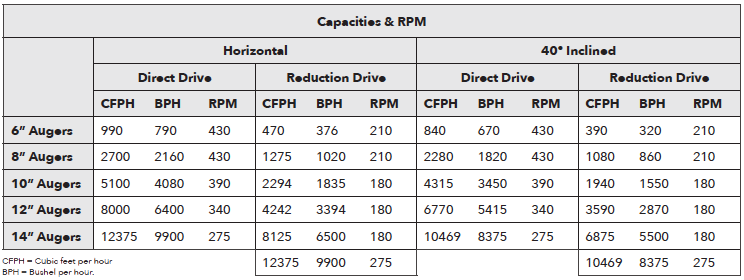
NOTE: Capacities and horsepower requirements are based on 14-15% moisture content. Tube fill rates were 55% for 40° inclined augers and 65% for horizontal augers. Changes in moisture content and fill rates will alter capacities and horsepower requirements. Starting an auger under load will also raise horsepower requirements.
ORDERING INFORMATION
TO SELECT AN AUGER SYSTEM:
- Select a tube diameter and drive type
- Find the estimated horsepower required
- Select a drive/belt combination by class use
IMPORTANT: Round augers are offered in assemblies for Class I (moderate) and Class II (commercial) usage. Class I is defined as a steady shock load not exceeding Motor HP rating and light shock loads during a 10 hour day. Moderate shock loads are acceptable if operation is intermittent. Class II is defined as a steady shock load not exceeding Motor HP rating and light shock loads during a 10 hour day. Moderate shock loads are acceptable during a 10 hour day. If your operating environment will exceed these limits, contact the factory for recommendations.
TUBE DIAMETER, DRIVE TYPE, AND CAPACITIES:
Choose a diameter and drive based on your incline and capacity requirements. On horizontal augers with intermediate discharges, use reduction drive to prevent “carry over” at the intermediates. Capacities are for corn, wheat, and soybeans.
NOTE: Capacities and horsepower requirements are based on 14-15% moisture content. Tube fill rates were 55% for 40° inclined augers and 65% for horizontal augers. Changes in moisture content and fill rates will alter capacities and horsepower requirements. Starting an auger under load will also raise horsepower requirements.

HORSEPOWER REQUIREMENTS
Find the estimated horsepower for your combination of drive type, auger length/diameter, auger incline, and material conveyed.
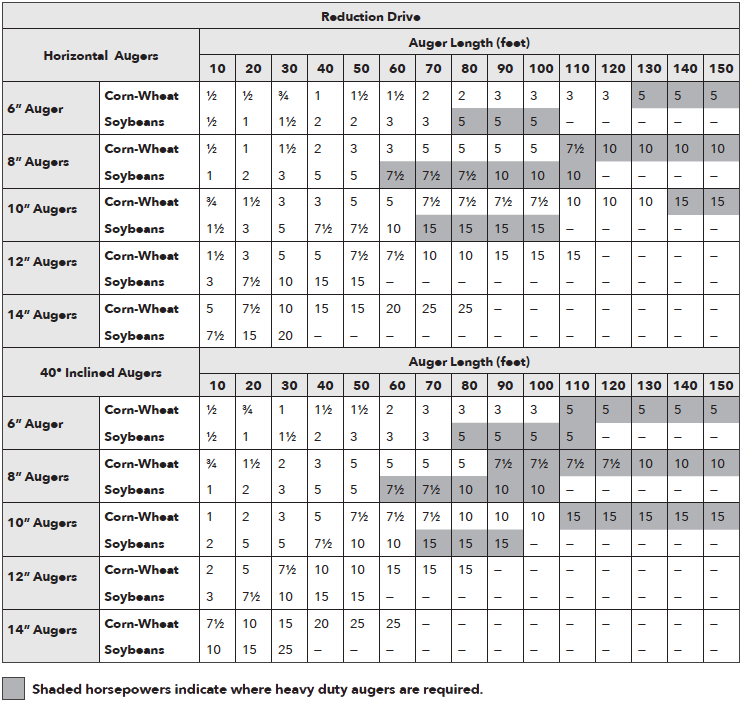
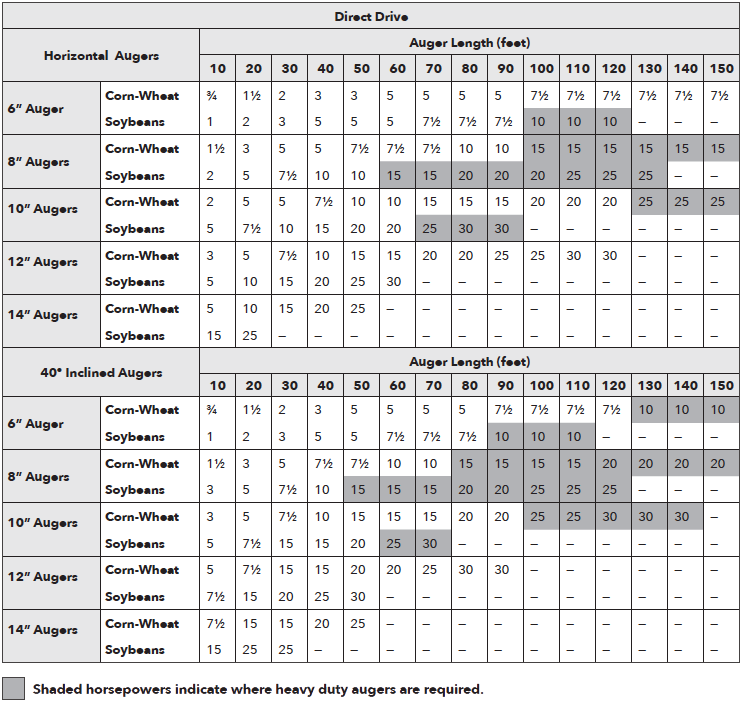
DRIVE TYPE AND BELT SELECTION
The charts here and on the next page show which drives are available for your auger/horsepower combination and the number of belts required.
EXAMPLE: An 8” auger (class 1) requiring 5 HP could have direct drive, double chain drive, or SCXT105 helical drive. Two belts are required on all three drives. Single chain drive is not available for this auger and HP combination.
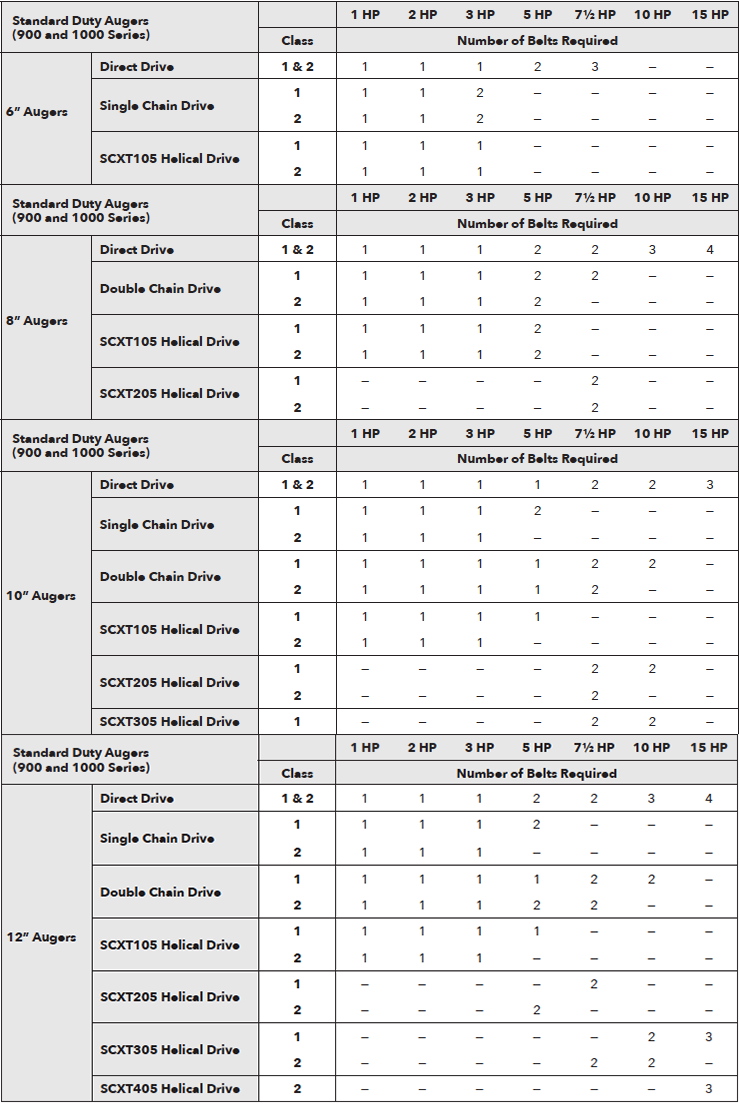
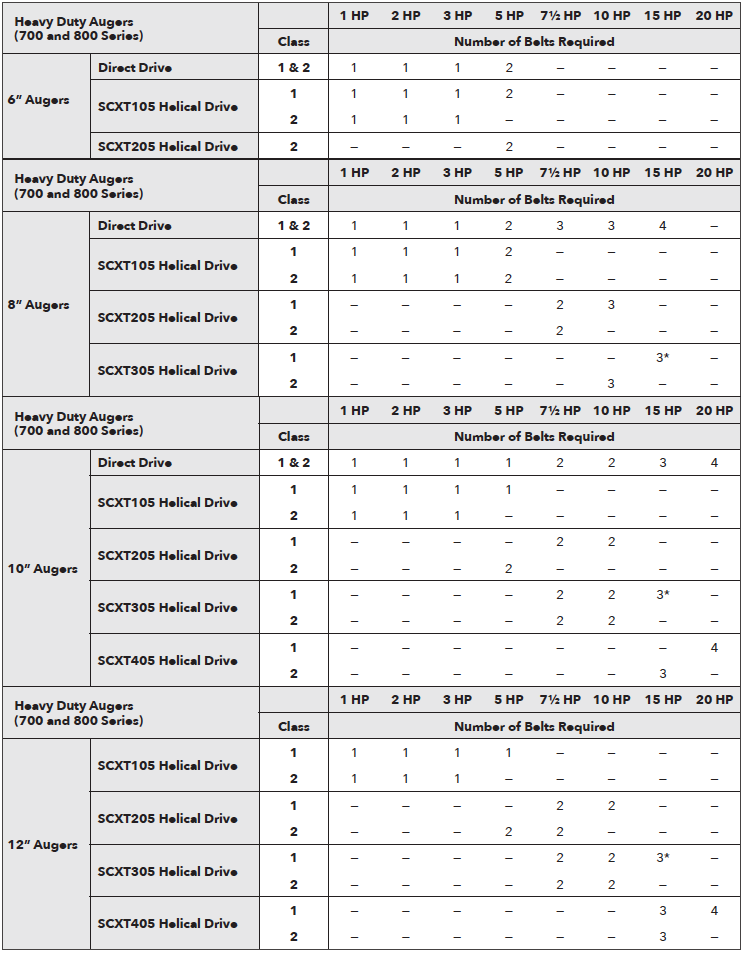
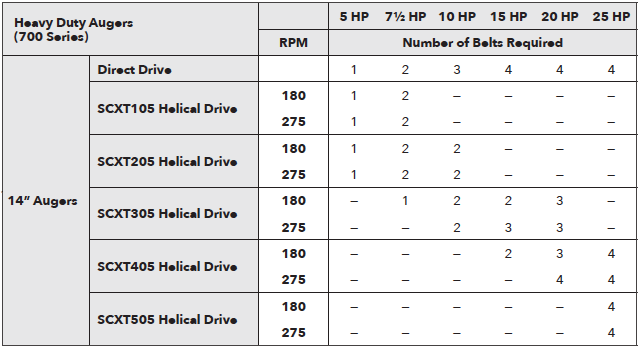
SPECIFICATIONS
